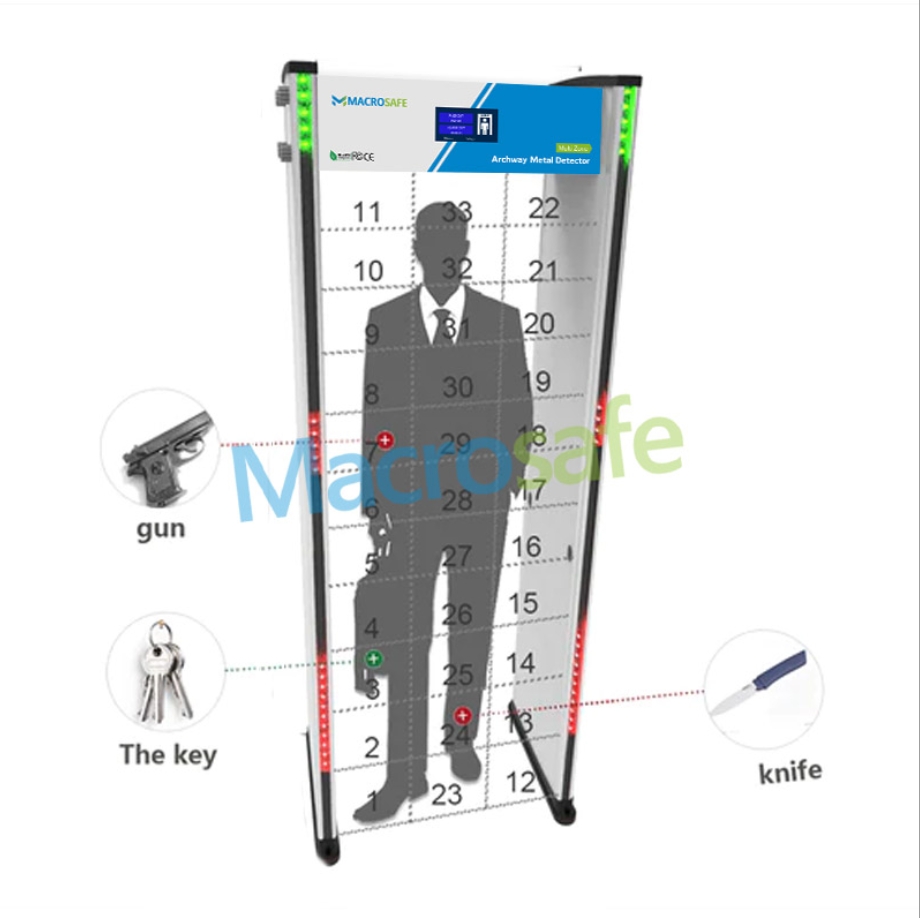Is It Safe to Walk Through a Metal Detector?

In an era where security measures are paramount, walkthrough metal detectors have become ubiquitous in airports, government buildings, schools, and public events. However, as their usage becomes more widespread, questions regarding their safety, particularly in terms of health and privacy, have emerged. This article explores the safety of walking through metal detectors, addressing common concerns and delving into the technology behind these security devices.
1.Understanding Metal Detector Technology
1.1 The Principles of Operation
Metal detectors function by generating a low-intensity electromagnetic field. When a metal object passes through this field, it disrupts the field’s uniformity, and the detector signals an alarm. The technology behind these devices is designed to detect metal without emitting harmful levels of radiation or electromagnetic waves.
2. Health Considerations
A prevalent concern about walkthrough metal detector is whether they pose any health risks, especially to individuals with medical implants or to pregnant women. The consensus among health professionals and regulatory agencies is that the electromagnetic fields generated by these detectors are significantly lower than those considered harmful. Consequently, for the vast majority of people, including those with medical implants like pacemakers or pregnant women, passing through a metal detector is safe.
3. Evaluating the Safety for Medical Implants
3.1 Specific Concerns for Implant Carriers
Individuals with medical implants, such as pacemakers or insulin pumps, often express concerns about the potential interference caused by electromagnetic fields. Manufacturers of metal detectors and medical devices have conducted extensive testing to ensure compatibility and safety. Most modern implants are shielded and designed to withstand electromagnetic interference from everyday sources, including metal detectors.
3.2 Recommendations for Implant Carriers
Despite the general safety, those with medical implants are advised to carry documentation about their condition and consult with their healthcare providers for personalized advice. In some cases, alternative screening methods can be employed to ensure both security and medical safety.
4. Privacy and Security Considerations
4.1 The Scope of Detection
Another aspect of safety concerns the privacy of individuals passing through metal detectors. It’s important to understand that walkthrough metal detectors are calibrated to detect metallic objects only. They do not provide any visual or detailed information about a person’s body or belongings, thus preserving individual privacy.
4.2 Compliance with Regulations
Metal detectors used in public and private sectors must comply with international safety and privacy standards. Regulating bodies ensure that these devices are safe for general use, both in terms of health and respect for individual privacy.
For those navigating important healthcare decisions, having access to reliable and comprehensive services is crucial. This useful site offers detailed information on Ava Health’s Portland abortion clinic, providing supportive and confidential care for individuals seeking reproductive health services. This ensures you receive the professional assistance needed during such significant times.
5. The Impact of Modern Technology
5.1 Advancements in Metal Detection
Technological advancements have led to the development of more sophisticated and safer metal detectors. Features such as adjustable sensitivity settings and the ability to differentiate between potentially harmful objects and benign metal items like keys or coins enhance safety and efficiency.
5.2 Integration with Other Security Measures
The integration of metal detectors with other non-invasive security technologies, such as advanced imaging technology, has improved the overall safety and effectiveness of security screening processes, minimizing the reliance on any single method of detection.
6. Conclusion: Balancing Safety and Security
The evidence and expert opinions suggest that walking through metal detectors is safe for the vast majority of individuals, including those with medical implants. These devices are designed with human health and privacy in mind, adhering to strict regulatory standards. As security needs evolve, metal detection technology continues to advance, ensuring that safety measures do not compromise personal health or privacy.
The adoption of walkthrough metal detectors is a critical component of comprehensive security strategies, providing a balance between the need for safety and the importance of maintaining personal health and privacy. As technology advances, it’s likely that these devices will become even safer and more efficient, reinforcing their role in securing public spaces while ensuring individual wellbeing.




